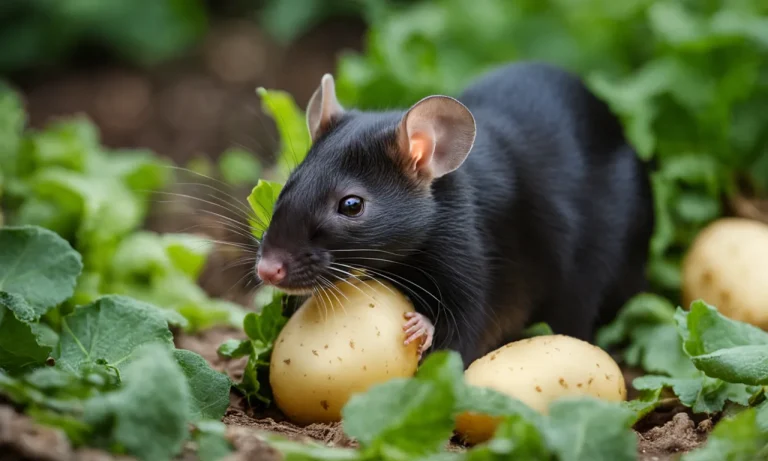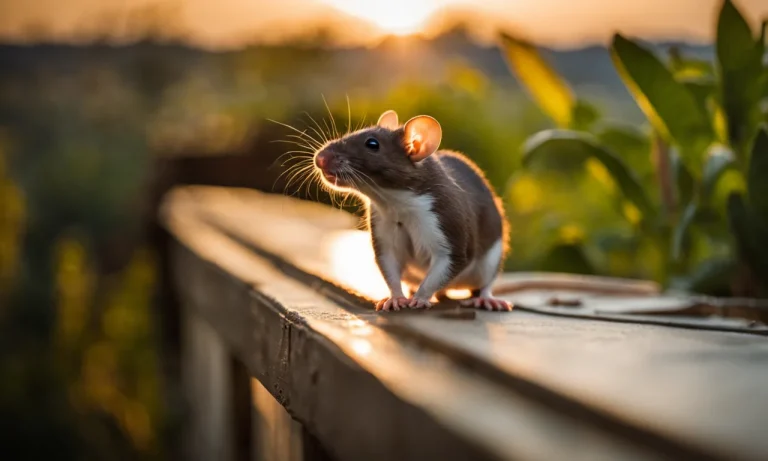Raising livestock can be a fulfilling and profitable endeavor for farmers and homesteaders. But when it comes to choosing between cows and goats, which four-legged farm animals will earn you more bang for your buck? If you’re looking to maximize profits, the devil is in the details.
In short, goats tend to be more profitable than cows on a small scale, while cows offer greater profit potential on larger operations. The lower costs,faster return on investment, and diverse income streams of goats make them ideal ‘mortgage lifters’ for small farms.
However, the larger size, higher milk production, and economies of scale associated with cows allow bigger profits on expansive grazing lands.
Upfront and Operating Costs
Land Requirements
When it comes to land requirements, cows and goats have different needs. Cows generally require more land compared to goats due to their larger size and grazing habits. On average, a cow needs about 1-2 acres of land for grazing, while goats can thrive on around 1/4 to 1/2 an acre.
However, it’s important to note that the specific land requirements can vary depending on factors such as breed, climate, and available forage.
Feed and Supplement Costs
Both cows and goats require a balanced diet to stay healthy and productive. However, cows tend to have a higher feed and supplement cost compared to goats. Cows have a larger appetite and need a higher quantity of feed to meet their nutritional requirements.
Additionally, cows often require more expensive supplements, such as mineral blocks, to maintain their health. On the other hand, goats are known for their browsing habits and can consume a wider variety of plants, which can help reduce feed costs.
Housing and Fencing
Both cows and goats need suitable housing and fencing to ensure their safety and well-being. Cows require sturdy and spacious barns or shelters to protect them from extreme weather conditions. Fencing for cows needs to be strong and secure to prevent them from wandering off.
Goats, on the other hand, are more agile and can be housed in smaller structures. Fencing for goats needs to be taller and more secure, as they are known for their ability to climb and jump.
Labor Needs
Caring for both cows and goats requires a certain amount of labor. However, cows generally require more intensive labor compared to goats. Milking cows, for example, can be a time-consuming task that needs to be done regularly.
Goats, on the other hand, are typically easier to handle and require less labor-intensive tasks. This can be an important factor to consider, especially for individuals with limited time or resources.
Vet and Medical Costs
Both cows and goats may require veterinary care and medical attention from time to time. However, cows generally have higher vet and medical costs compared to goats. Cows are more susceptible to certain health issues and may require regular vaccinations, deworming, and treatments.
Goats, on the other hand, are generally hardier and more resistant to diseases, which can help reduce vet and medical expenses.
It’s important to keep in mind that these costs can vary depending on various factors such as herd size, management practices, and geographical location. Consulting with local experts, such as agricultural extension agents or veterinarians, can provide more specific information and help calculate the actual costs involved in raising cows or goats.
Milk and Meat Production
Milk Output Per Animal
When it comes to milk production, cows have the upper hand. On average, a dairy cow can produce around 6-7 gallons of milk per day. This translates to approximately 22,000-27,000 pounds of milk per year.
The high milk output of cows makes them a preferred choice for dairy farmers looking to maximize their profits.
On the other hand, goats also have impressive milk production capabilities. A dairy goat can produce around 2.5-3 gallons of milk per day. While this is significantly lower than what a cow can produce, it is important to note that goats are generally smaller animals, and their milk is prized for its unique flavor and composition.
Goat milk is often used to make specialty cheeses, soaps, and lotions.
Meat Yields
When it comes to meat production, cows are typically the go-to livestock. A mature cow can yield around 450-550 pounds of meat, depending on the breed and size. The meat from cows is commonly used for steaks, ground beef, and other popular cuts.
While goats are not primarily raised for meat, they still contribute to the meat industry. A mature goat can yield around 25-50 pounds of meat. Goat meat, also known as chevon or cabrito, is lean and flavorful, making it a popular choice in many cuisines around the world.
It is often used in stews, curries, and barbecues.
Breeding Rates and Offspring
Cows have a longer gestation period compared to goats. A cow typically carries a calf for around 9 months before giving birth. On average, cows will have one calf per year. This slower reproductive rate can be a limiting factor for farmers looking to expand their herd quickly.
Goats, on the other hand, have a shorter gestation period of around 5 months. They are also prolific breeders, often giving birth to multiple kids at a time. This faster reproductive rate allows goat farmers to increase their herd size more rapidly.
Other Income Sources
When it comes to raising livestock, there are several other income sources that can help boost your profits. In addition to the primary products such as milk or meat, both cows and goats offer additional opportunities for generating income. Here are three other income sources to consider:
Fiber and Mohair
Cows may not offer much in terms of fiber production, but goats, particularly certain breeds like the Angora and Cashmere, can provide a valuable source of fiber. Mohair, which comes from Angora goats, is known for its softness and luster, making it highly sought after in the textile industry.
By shearing the goats regularly, you can harvest their fiber and sell it to fiber mills or use it to produce your own yarn or textiles. This can be a great way to diversify your income and tap into the growing market for natural and sustainable fibers.
Selling Offspring
Both cows and goats reproduce regularly, providing an opportunity to sell their offspring. Calves and kids can be sold to other farmers or individuals looking to start their own herds. The demand for quality breeding stock is often high, especially for popular breeds or those with desirable traits.
By carefully selecting your breeding pairs and focusing on improving the genetics of your herd, you can command higher prices for your offspring. This can be a lucrative income source, particularly if you establish a reputation for breeding high-quality animals.
Stud Service
For those who own male animals, offering stud services can be a profitable venture. Farmers who have cows or goats in need of breeding may be willing to pay a fee to use your male animals for mating. This can be a convenient arrangement for both parties, as it allows the owner of the female animal to access quality genetics without the expense and responsibility of owning a male.
By advertising your stud services and ensuring that your animals have desirable traits, you can attract customers and generate additional income.
Remember, the profitability of these income sources will vary depending on factors such as market demand, breed popularity, and the quality of your animals. It’s important to research your target market and stay informed about industry trends to maximize your earnings.
Additionally, consider joining industry associations or participating in livestock shows and auctions to network with other farmers and potential buyers.
Time to Profitability
When it comes to comparing cows and goats in terms of profitability, one key factor to consider is the time it takes for each livestock to bring in profits. This is an important consideration for farmers and investors who are looking for a quick return on their investment.
Cows:
Cows are known for their longer time to profitability compared to goats. This is because cows take a longer time to reach maturity and start producing milk or meat. On average, it can take anywhere from 2 to 3 years for a cow to become productive, depending on the breed and management practices.
Goats:
On the other hand, goats have a shorter time to profitability compared to cows. Goats reach maturity at a much faster rate, typically within 6 to 12 months. This means that farmers who choose to raise goats can start seeing returns on their investment in a relatively short period of time.
Comparison:
In terms of time to profitability, goats have the advantage over cows. This is especially beneficial for farmers who are looking for a quicker return on their investment. However, it’s important to note that while goats may reach profitability faster, the overall profit potential of cows can be higher due to their larger size and higher market value.
It’s also worth mentioning that the time to profitability can vary depending on various factors such as breed, management practices, and market conditions. Farmers should consider these factors and make informed decisions based on their specific goals and resources.
Maximizing Profits
When it comes to livestock farming, maximizing profits is essential for any farmer. In order to do so, there are several factors to consider, including choosing the best breeds, determining the optimal herd size, and exploring direct marketing opportunities.
Choosing the Best Breeds
One of the key factors in maximizing profits is selecting the right breeds of livestock. Both cows and goats have their own advantages and disadvantages in terms of profitability. For cows, certain breeds, such as Angus and Hereford, are known for their high meat quality and market demand.
On the other hand, goats, particularly Boer and Kiko breeds, are known for their efficient conversion of forage into meat, making them a great choice for meat production.
It’s important to consider market demands and trends when choosing the best breeds. For example, if there is a growing demand for goat meat in your area, investing in a goat herd could prove to be a profitable venture.
Additionally, consider the climate and terrain of your farming location, as some breeds may be better suited for certain environments.
Optimal Herd Size
Another important factor in maximizing profits is determining the optimal herd size. The size of your herd will depend on various factors, including available resources, market demand, and your management capabilities.
It’s important to find a balance between the number of livestock you can effectively manage and the potential profitability of a larger herd.
Managing a smaller herd may allow for more personalized care and attention to each animal, resulting in better health and productivity. However, a larger herd can benefit from economies of scale and potentially lower production costs.
It’s crucial to consider the carrying capacity of your land and ensure that you have enough resources to support the chosen herd size.
Direct Marketing
Exploring direct marketing opportunities is another strategy to maximize profits. By cutting out the middleman, farmers can potentially earn higher prices for their products. Direct marketing allows for a closer connection with consumers, enabling farmers to showcase the quality and unique aspects of their livestock.
There are various ways to engage in direct marketing, such as selling meat directly to consumers through farmers markets or establishing a farm store. Additionally, some farmers have found success in offering value-added products, such as cheese or yogurt made from cow or goat milk.
Building relationships with local restaurants, grocery stores, and specialty shops can also create additional revenue streams.
When considering direct marketing, it’s important to conduct market research, understand local regulations, and develop a solid marketing strategy. By effectively promoting your products and building a loyal customer base, direct marketing can significantly increase profits for livestock farmers.
Conclusion
When weighing the profit potential of cows versus goats, the scales generally tip in favor of goats for small hobby farms and cows for large commercial operations. Goats provide a faster return on investment and diverse income streams that add up quickly.
But cows offer greater efficiency and higher production at scale. By selecting suitable breeds, sizing your herd appropriately, and leveraging direct marketing, both cows and goats can be tremendously rewarding additions to a profitable farm.






